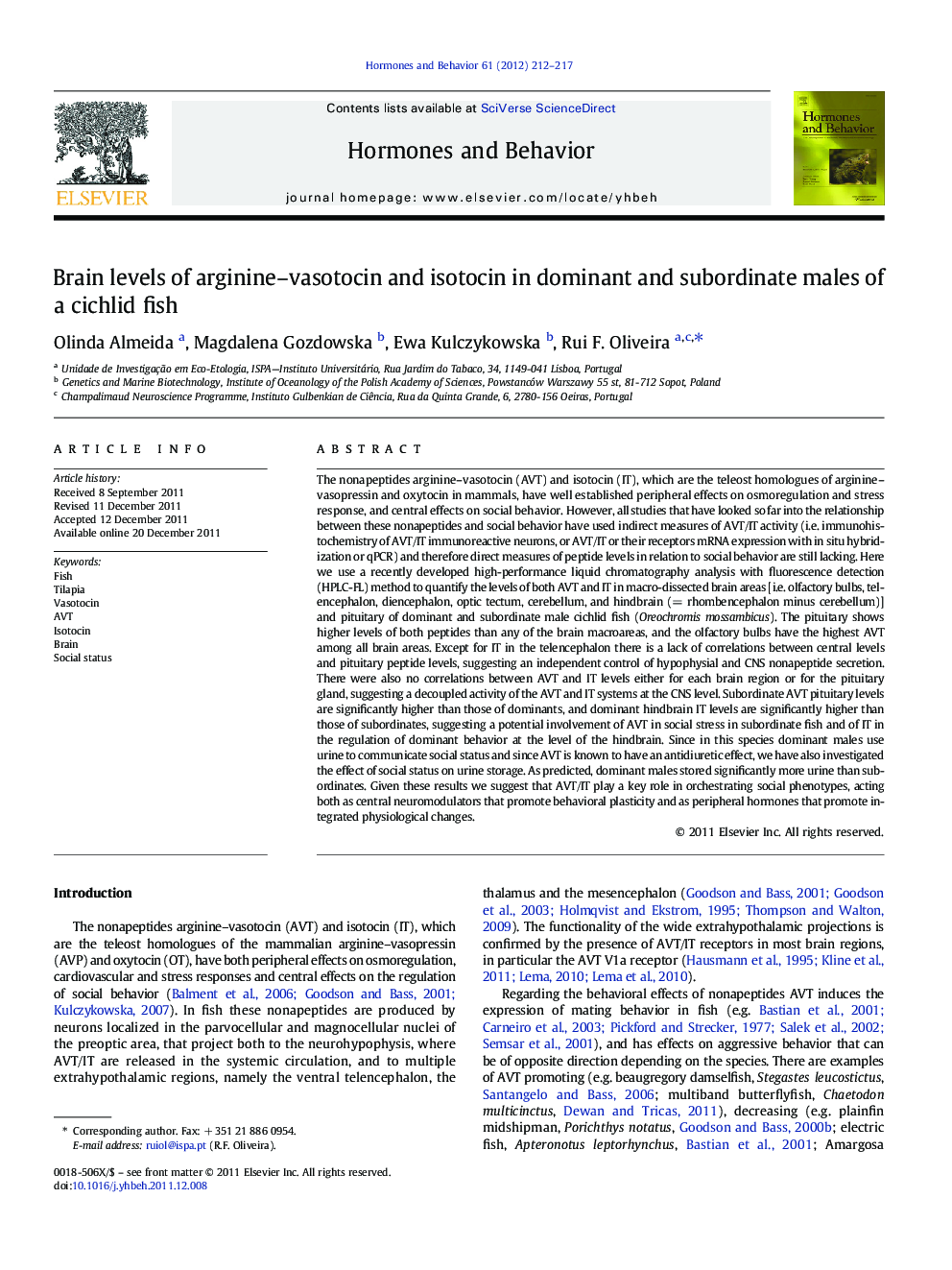| کد مقاله | کد نشریه | سال انتشار | مقاله انگلیسی | نسخه تمام متن |
|---|---|---|---|---|
| 323146 | 540512 | 2012 | 6 صفحه PDF | دانلود رایگان |

The nonapeptides arginine–vasotocin (AVT) and isotocin (IT), which are the teleost homologues of arginine–vasopressin and oxytocin in mammals, have well established peripheral effects on osmoregulation and stress response, and central effects on social behavior. However, all studies that have looked so far into the relationship between these nonapeptides and social behavior have used indirect measures of AVT/IT activity (i.e. immunohistochemistry of AVT/IT immunoreactive neurons, or AVT/IT or their receptors mRNA expression with in situ hybridization or qPCR) and therefore direct measures of peptide levels in relation to social behavior are still lacking. Here we use a recently developed high-performance liquid chromatography analysis with fluorescence detection (HPLC-FL) method to quantify the levels of both AVT and IT in macro-dissected brain areas [i.e. olfactory bulbs, telencephalon, diencephalon, optic tectum, cerebellum, and hindbrain (= rhombencephalon minus cerebellum)] and pituitary of dominant and subordinate male cichlid fish (Oreochromis mossambicus). The pituitary shows higher levels of both peptides than any of the brain macroareas, and the olfactory bulbs have the highest AVT among all brain areas. Except for IT in the telencephalon there is a lack of correlations between central levels and pituitary peptide levels, suggesting an independent control of hypophysial and CNS nonapeptide secretion. There were also no correlations between AVT and IT levels either for each brain region or for the pituitary gland, suggesting a decoupled activity of the AVT and IT systems at the CNS level. Subordinate AVT pituitary levels are significantly higher than those of dominants, and dominant hindbrain IT levels are significantly higher than those of subordinates, suggesting a potential involvement of AVT in social stress in subordinate fish and of IT in the regulation of dominant behavior at the level of the hindbrain. Since in this species dominant males use urine to communicate social status and since AVT is known to have an antidiuretic effect, we have also investigated the effect of social status on urine storage. As predicted, dominant males stored significantly more urine than subordinates. Given these results we suggest that AVT/IT play a key role in orchestrating social phenotypes, acting both as central neuromodulators that promote behavioral plasticity and as peripheral hormones that promote integrated physiological changes.
► A HPLC method is used to quantify the levels of AVT and IT in brain macro-areas of a cichlid fish.
► The pituitary shows higher levels of both peptides than any of the brain macroareas.
► The olfactory bulbs have the highest AVT levels among all brain areas.
► AVT pituitary levels are significantly higher in subordinates, suggesting a role of AVT in chronic social stress.
► Dominant hindbrain IT levels are significantly higher, suggesting a role of IT in dominant behavior.
Journal: Hormones and Behavior - Volume 61, Issue 2, February 2012, Pages 212–217